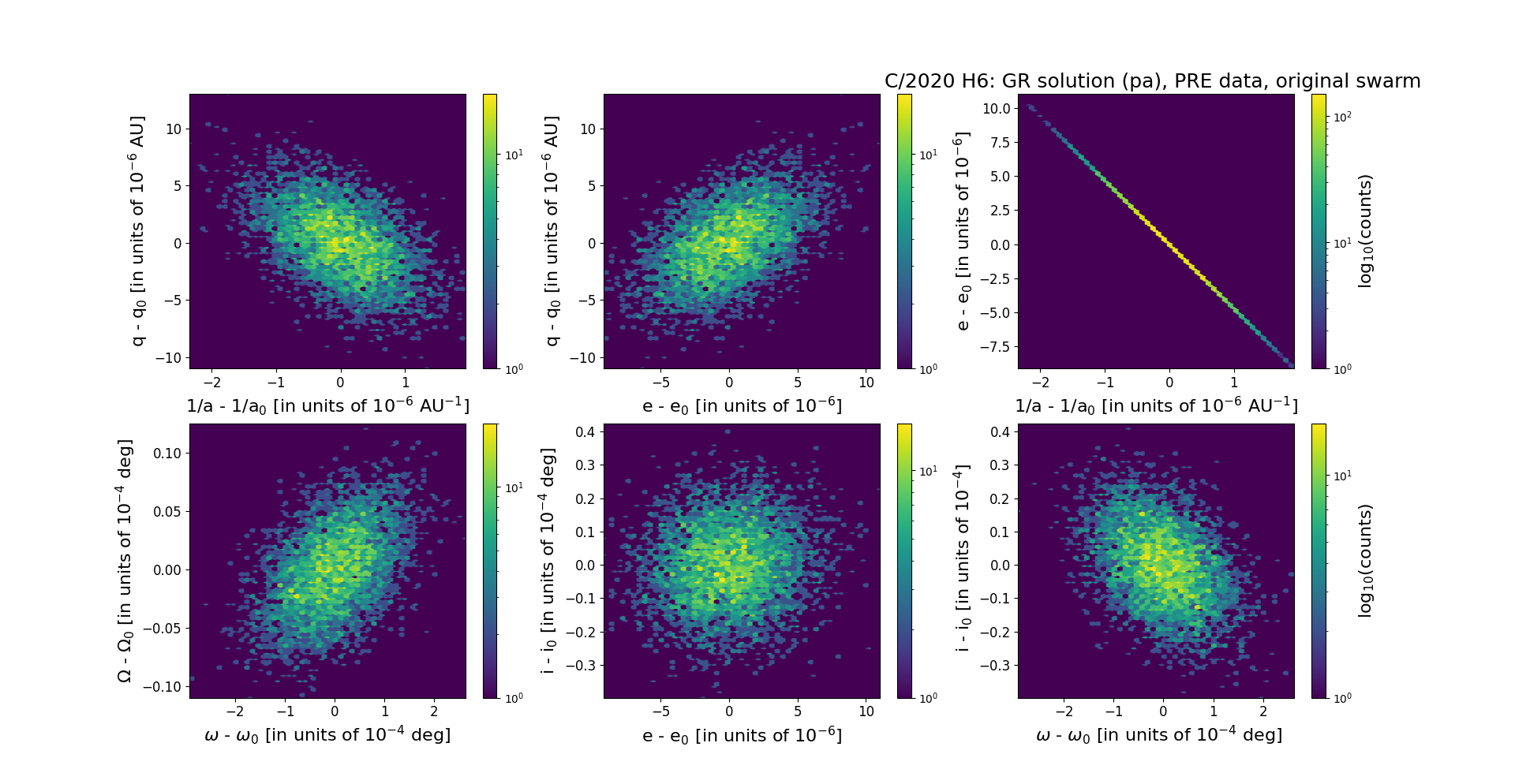C/2020 H6 ATLAS
more info
Comet C/2020 H6 was discovered on 22 April 2020, about 1.3 yr before its perihelion passage. This comet was observed until 8 January 2024 (as in February 2025).
Comet had its closest approach to the Earth on 30 April 2021 (3.86 au); about six months before its perihelion passage.
The preferred NG solution ('bd') given here is based on data span over 3.72 yr in a range of heliocentric distances: 6.22 au – 4.70 au (perihelion) – 7.80 au. Orbits based on pre-perihelion and post-perihelion data independently are also presented.
This Oort spike comet suffers moderate planetary perturbations during its passage through the planetary system that lead to a significantly more tight future orbit (semimajor axis of about 2,000 au).
Comet had its closest approach to the Earth on 30 April 2021 (3.86 au); about six months before its perihelion passage.
The preferred NG solution ('bd') given here is based on data span over 3.72 yr in a range of heliocentric distances: 6.22 au – 4.70 au (perihelion) – 7.80 au. Orbits based on pre-perihelion and post-perihelion data independently are also presented.
This Oort spike comet suffers moderate planetary perturbations during its passage through the planetary system that lead to a significantly more tight future orbit (semimajor axis of about 2,000 au).
| solution description | ||
|---|---|---|
| number of observations | 792 | |
| data interval | 2020 04 22 – 2021 08 23 | |
| data arc selection | data generally limited to pre-perihelion (PRE) | |
| range of heliocentric distances | 6.22 au – 4.71au | |
| detectability of NG effects in the comet's motion | comet with determinable NG~orbit | |
| type of model of motion | GR - gravitational orbit | |
| data weighting | YES | |
| number of residuals | 1561 | |
| RMS [arcseconds] | 0.32 | |
| orbit quality class | 1a | |
| orbital elements (barycentric ecliptic J2000) | ||
|---|---|---|
| Epoch | 1716 12 11 | |
| perihelion date | 2021 09 30.36455154 | ± 0.00046420 |
| perihelion distance [au] | 4.70579452 | ± 0.00000296 |
| eccentricity | 0.99992549 | ± 0.00000297 |
| argument of perihelion [°] | 20.299471 | ± 0.000071 |
| ascending node [°] | 213.635592 | ± 0.000003 |
| inclination [°] | 79.934553 | ± 0.000011 |
| reciprocal semi-major axis [10-6 au-1] | 15.83 | ± 0.63 |
| file containing 5001 VCs swarm |
|---|
| 2020h6pa.bmi |

Upper panel: Time distribution of positional observations with corresponding heliocentric (red curve) and geocentric (green curve) distance at which they were taken. The horizontal dotted line shows the perihelion distance for a given comet whereas vertical dotted line — the moment of perihelion passage.
Middle panel(s): O-C diagram for a given solution (sometimes in comparison to another solution available in CODE), where residuals in right ascension are shown using magenta dots and in declination by blue open circles.
Lowest panel: Relative weights for a given data set(s).
Middle panel(s): O-C diagram for a given solution (sometimes in comparison to another solution available in CODE), where residuals in right ascension are shown using magenta dots and in declination by blue open circles.
Lowest panel: Relative weights for a given data set(s).
